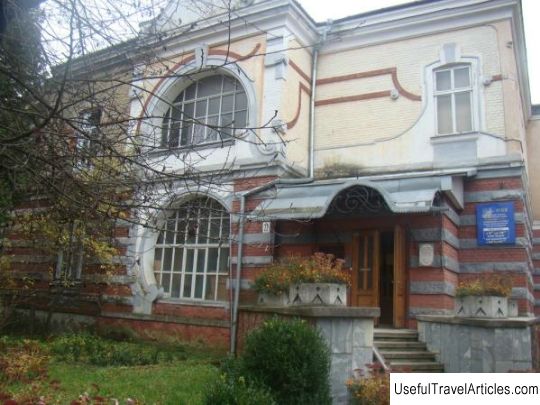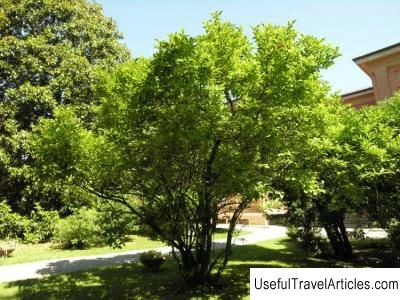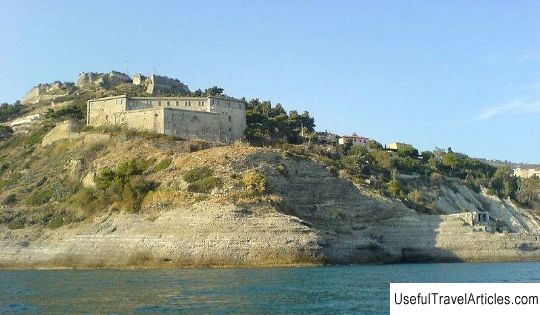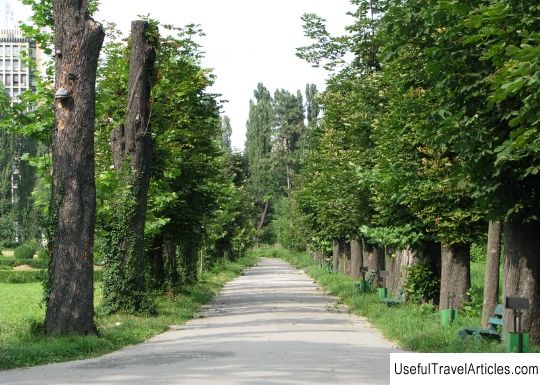Botanical Garden ”Hanbury” (Giardini Botanici Hanbury) description and photos - Italy: Ventimiglia
Rating: 9,1/10 (2343 votes) 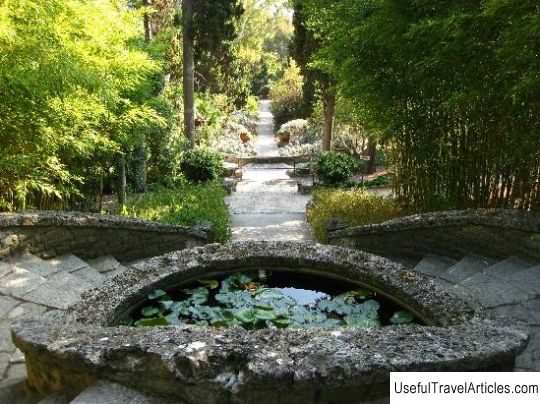
Giardini Botanici Hanbury description and photos - Italy: Ventimiglia. Detailed information about the attraction. Description, photographs and a map showing the nearest significant objects. The title in English is Giardini Botanici Hanbury. Photo and descriptionThe Hanbury Botanical Garden, spread over an area of 18 hectares a few kilometers from the Ligurian town of Ventimiglia, is the largest botanical garden in Italy and one of the largest in Europe. It is managed by the University of Genoa. The garden was founded by Sir Thomas Hanbury on the small Capo Mortola peninsula jutting out into the Mediterranean. In 1867, Hanbury acquired the surviving Palazzo Orengo and for several years, together with his brother Daniel, botanist and landscape designer Ludwig Winter, and some scientists worked on the creation of the garden. By 1883, about 600 plants were growing around the Palazzo, in 1889 there were 3.5 thousand, and by 1912 - 5800! Hanbury died in 1907, but the creation of the garden continued after the First World War with the participation of his daughter-in-law, Lady Dorothy Hanbury. Unfortunately, during the Second World War, the botanical garden was seriously damaged, as it was without supervision for several years. In 1960, Lady Hanbury sold it to the Italian government, which entrusted the management of the garden, first to the International Institute of Liguria, and then to the University of Genoa. In 1987, a large-scale project for the restoration of the botanical garden was implemented, and in 2000 it was declared a specially protected natural area. Today, 9 out of 18 hectares of the total area of the garden are arable land, where about 2.5 thousand plant species grow. Most of the local exhibits are related to the plants of the Mediterranean area. Here you can see agaves, aloe, araucaria, planted in 1832, sage, olive groves. In the greenhouse of rare fruits actinidia, papaya, persimmon, feijoa, myrtle, macadamia, irgu, kumquat. Sections of the garden are occupied by palms, succulents, Australian plants, citrus fruits and flowers. In addition to the botanical part itself, there are other sights in the Hanbury Garden - for example, fragments of an ancient Roman road, grottoes, sculptural compositions, fountains, a bronze dragon from Kyoto and a Japanese bell from 1764. At the grave of Thomas Hanbury and his wife, there is a quaint Moroccan pavilion. You can also visit the Moorish Museum, at the entrance to which there is a mosaic depicting Marco Polo.         We also recommend reading Big Fanagoria cave description and photos - Russia - South: Goryachiy Klyuch Topic: Botanical Garden ”Hanbury” (Giardini Botanici Hanbury) description and photos - Italy: Ventimiglia. |
